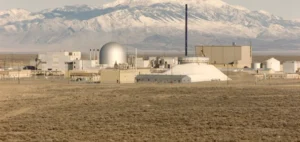The International Atomic Energy Agency (IAEA) has announced that Japan has been discharging water from the accident-stricken Fukushima nuclear power plant into the sea since Thursday, with tritium concentrations well below the prescribed limits.
Tritium monitoring at Fukushima: Encouraging results of IAEA analysis
“IAEA experts collected samples this week of the water prepared for the first spill,” explained the UN body, which is overseeing the operation, in a statement.
“Independent on-site analysis confirmed” that the concentration of the radioactive substance tritium was “well below the operational limit of 1,500 becquerels (Bq) per liter”, according to the same source.
This level is itself 40 times lower than the Japanese national standard for tritiated water aligned with the international standard (60,000 Bq/liter), and is also around seven times lower than the ceiling set by the World Health Organization (WHO) for drinking water (10,000 Bq/liter). In July, the IAEA gave the go-ahead for the project, judging that it would have a “negligible radiological impact on the population and the environment”.
Fukushima wastewater management: Local concerns and international tensions emerge
While this is common practice in the nuclear industry worldwide, it has raised the concerns of Japanese fishermen and provoked strong opposition from Beijing, which immediately tightened its trade restrictions on Tokyo. To allay fears, the Director General of the International Atomic Energy Agency (IAEA), Rafael Grossi, said he had dispatched a team to the site to ensure that “the process is conducted in a safe and transparent manner”, according to the statement.
In total, Japan plans to dispose of over 1.3 million m3 of wastewater stored at the Fukushima Daiichi power plant site by 2050, from rainwater, groundwater and the injections needed to cool the reactor cores that melted after the March 2011 tsunami devastated the country’s northeast coast.






















